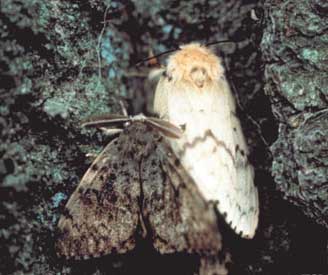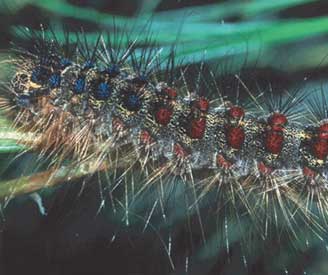Spongy Moth
Lymantria dispar
Description
Males are dark brown with black “chevron” markings. Females are white with black “chevron” markings. Males have large feathery antennae. Larvae are dark colored and fuzzy with 5 pairs of blue spots. One year lifecycle.
Host Plants
Prefers oak, aspen, willow, apple and crabapple, tamarack, white birch, witch hazel, and mountain ash but are found on over 300 species of trees.
Pathway of Introduction and Spread
First introduced from Europe for silk production, and first found in Massachusetts in the late 1800’s. Spreads through the movement of nursery infested stock, movement of firewood, and on vehicles from infested areas.
Symptoms
Shot holes in leaves and foliage stripped from trees. Declining trees from many years of damage.
Location in Nebraska
No current known infestations in Nebraska; sporadically found here as a hitchhiker. Currently found in several states in northeastern U.S.
Additional Information
John H. Ghent, USDA Forest Service, Bugwood.org
Connecticut Agricultural Experiment Station Archive, Connecticut Agricultural
Experiment Station, Bugwood.org

